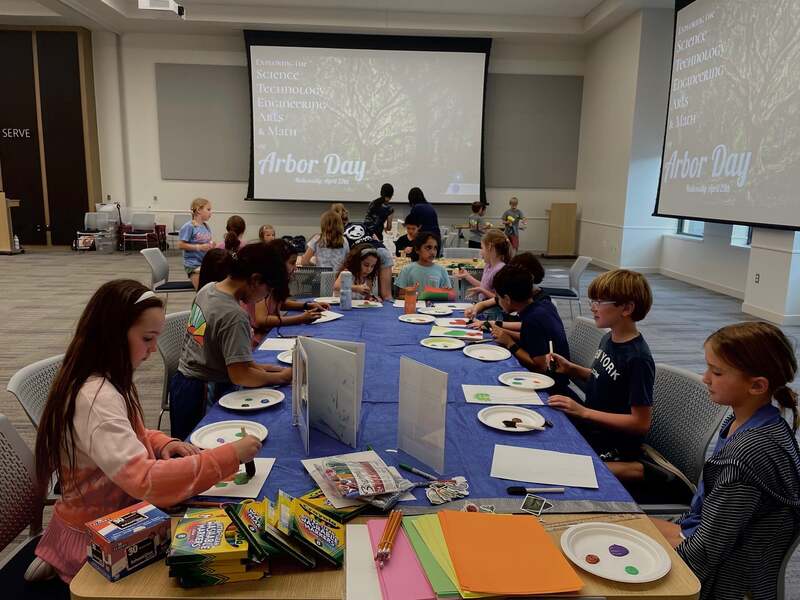real money casino online
|
Table games using cues and billiard balls "Billiards" redirects here. This article covers the word as an umbrella term for cue sports☀️ in general. For specific games known as "billiards" and all other uses of the term, see Billiard (disambiguation) Cue sports are a☀️ wide variety of games of skill played with a cue, which is used to strike billiard balls and thereby cause☀️ them to move around a cloth-covered table bounded by elastic bumpers known as cushions . Interior view of billiard hall, Toledo,☀️ Ohio There are three major subdivisions of games within cue sports: Billiards has a long history from its inception in the 15th☀️ century, with many mentions in the works of Shakespeare, including the line "let's to billiards" in Antony and Cleopatra (1606–07),☀️ and enthusiasts of the sport include Mozart, Louis XIV of France, Marie Antoinette, Immanuel Kant, Napoleon, Abraham Lincoln, Mark Twain,☀️ George Washington, French president Jules Grévy, Charles Dickens, George Armstrong Custer, Theodore Roosevelt, Lewis Carroll, W.C. Fields, Babe Ruth, Bob Hope,☀️ and Jackie Gleason. History [ edit ] Billiards in the 1620s was played with a port, a king pin, pockets, and maces. All☀️ cue sports are generally regarded to have evolved into indoor games from outdoor stick-and-ball lawn games,[1] specifically those retroactively termed☀️ ground billiards,[2] and as such to be related to the historical games jeu de mail and palle-malle, and modern trucco,☀️ croquet, and golf, and more distantly to the stickless bocce and bowls. The word billiard may have evolved from the French☀️ word billart or billette, meaning 'stick', in reference to the mace , an implement similar to a golf putter, and☀️ which was the forerunner to the modern cue; however, the term's origin could have been from French bille, meaning 'ball'. [3]☀️ The modern term cue sports can be used to encompass the ancestral mace games, and even the modern cueless variants,☀️ such as finger billiards, for historical reasons. Cue itself came from queue, the French word for 'tail'. This refers to the early☀️ practice of using the tail or butt of the mace, instead of its club foot, to strike the ball when☀️ it lay against a rail cushion .[3] The sons of Louis, Grand Dauphin, playing the 'royal game of fortifications', an early☀️ form of obstacle billiards with similarities to modern miniature golf A recognizable form of billiards was played outdoors in the 1340s,☀️ and was reminiscent of croquet. King Louis XI of France (1461–1483) had the first known indoor billiard table. [3] Louis XIV further☀️ refined and popularized the game, and it swiftly spread among the French nobility. [3] While the game had long been played☀️ on the ground, this version appears to have died out (aside from trucco) in the 17th century, in favor of☀️ croquet, golf and bowling games, even as table billiards had grown in popularity as an indoor activity. [3] The imprisoned Mary,☀️ Queen of Scots, complained when her table de billiard was taken away (by those who eventually became her executioners, who☀️ were to cover her body with the table's cloth). [3] Billiards grew to the extent that by 1727, it was being☀️ played in almost every Paris café. [3] In England, the game was developing into a very popular activity for members of☀️ the gentry.[3] By 1670, the thin butt end of the mace began to be used not only for shots under the☀️ cushion (which itself was originally only there as a preventative method to stop balls from rolling off), but players increasingly☀️ preferred it for other shots as well. The footless, straight cue as it is known today was finally developed by about☀️ 1800.[3] Initially, the mace was used to push the balls, rather than strike them. The newly developed striking cue provided a new☀️ challenge. Cushions began to be stuffed with substances to allow the balls to rebound, in order to enhance the appeal of☀️ the game. After a transitional period where only the better players would use cues, the cue came to be the first☀️ choice of equipment.[3] The demand for tables and other equipment was initially met in Europe by John Thurston and other furniture☀️ makers of the era. The early balls were made from wood and clay, but the rich preferred to use ivory.[3] Early billiard☀️ games involved various pieces of additional equipment, including the "arch" (related to the croquet hoop), "port" (a different hoop, often☀️ rectangular), and "king" (a pin or skittle near the arch) in the early 17th to late 18th century,[4][3] but other☀️ game variants, relying on the cushions (and pockets cut into them), were being formed that would go on to play☀️ fundamental roles in the development of modern billiards.[3] Illustration of a three-ball pocket billiards game in early 19th century Tübingen, Germany,☀️ using a table much longer than the modern type The early croquet-like games eventually led to the development of the carom☀️ billiards category. These games are games played with three or sometimes four balls, on a table without holes in which the☀️ goal is generally to strike one object ball with a cue ball , then have the cue ball rebound off☀️ of one or more of the cushions and strike a second object ball. Variations include straight rail, balkline, one-cushion, three-cushion, five-pins,☀️ and four-ball, among others. One type of obstacle remained a feature of many tables, originally as a hazard and later as☀️ a target, in the form of pockets, or holes partly cut into the table bed and partly into the cushions,☀️ leading to the rise of pocket billiards, including "pool" games such as eight-ball, nine-ball, straight pool, and one-pocket; Russian pyramid;☀️ snooker; English billiards; and others. In the United States, pool and billiards had died out for a bit, but between 1878☀️ and 1956 the games became very popular. Players in annual championships began to receive their own cigarette cards. This was mainly due☀️ to the fact that it was a popular pastime for troops to take their minds off from battle. However, by the☀️ end of World War II, pool and billiards began to die down once again. It was not until 1961 when the☀️ film The Hustler came out that sparked a new interest in the game. Now the game is generally a well-known game☀️ and has many players of all different skill levels. [5]As a sport [ edit ] The games with regulated international professional competition,☀️ if not others, have been referred to as "sports" or "sporting" events, not simply "games", since 1893 at the latest. [6]☀️ Quite a variety of particular games (i.e. , sets of rules and equipment) are the subject of present-day competition, including many☀️ of those already mentioned, with competition being especially broad in nine-ball, snooker, three-cushion, and eight-ball. Snooker, though a pocket billiards variant☀️ and closely related in its equipment and origin to the game of English billiards, is a professional sport organized at☀️ an international level, and its rules bear little resemblance to those of modern pool, pyramid, and other such games. A "Billiards"☀️ category encompassing pool, snooker, and carom has been part of the World Games since 2001. Equipment [ edit ] Billiard balls [☀️ edit ] Cue balls from left to right: Russian pool and kaisa-68 mm ( 2 + 11 ⁄ 16 in)in) Carom-61. 5☀️ mm ( 2 + 7 ⁄ 16 in) in) American-style pool-57. 15 mm ( 2 + 1 ⁄ 4 in)in) Snooker-52. 5 mm☀️ ( 2 + 1 ⁄ 16 in) in) Blackball pool-51 mm (2 in) Billiard balls vary from game to game, in size,☀️ design and quantity. Russian pyramid and kaisa have a size of 68 mm ( 2+11⁄16 in). In Russian pyramid there are 16☀️ balls, as in pool, but 15 are white and numbered, and the cue ball is usually red. [7] In kaisa, five☀️ balls are used: the yellow object ball (called the kaisa in Finnish), two red object balls, and the two white☀️ cue balls (usually differentiated by one cue ball having a dot or other marking on it and each of which☀️ serves as an object ball for the opponent). Carom billiards balls are larger than pool balls, having a diameter of 61. 5☀️ mm ( 2+7⁄16 in), and come as a set of two cue balls (one colored or marked) and an object☀️ ball (or two object balls in the case of the game four-ball). Standard pool balls are 57. 15 mm ( 2+1⁄4 in),☀️ are used in many pool games found throughout the world, come in sets of two suits of object balls, seven☀️ solids and seven stripes , an 8 ball and a cue ball ; the balls are racked differently for different☀️ games (some of which do not use the entire ball set). Blackball (English-style eight-ball) sets are similar, but have unmarked groups☀️ of red and yellow balls instead of solids and stripes, known as "casino" style. They are used principally in Britain, Ireland,☀️ and some Commonwealth countries, though not exclusively, since they are unsuited for playing nine-ball. The diameter varies but is typically slightly☀️ smaller than that of standard solids-and-stripes sets. Snooker balls are smaller than American-style pool balls with a diameter of 52. 5 mm☀️ ( 2+1⁄16 in), and come in sets of 22 (15 reds, 6 " colours ", and a cue ball). English billiard☀️ balls are the same size as snooker balls and come in sets of three balls (two cue balls and a☀️ red object ball). Other games, such as bumper pool, have custom ball sets. Billiard balls have been made from many different materials☀️ since the start of the game, including clay, bakelite, celluloid, crystallite, ivory, plastic, steel and wood. The dominant material from 1627☀️ until the early 20th century was ivory. The search for a substitute for ivory use was not for environmental concerns, but☀️ based on economic motivation and fear of danger for elephant hunters. It was in part spurred on by a New York☀️ billiard table manufacturer who announced a prize of $10,000 for a substitute material. The first viable substitute was celluloid, invented by☀️ John Wesley Hyatt in 1868, but the material was volatile, sometimes exploding during manufacture, and was highly flammable. [8][9]Tables [ edit☀️ ] Pool table with equipment There are many sizes and styles of billiard tables. Generally, tables are rectangles twice as long as they☀️ are wide. Table sizes are typically referred to by the nominal length of their longer dimension. Full-size snooker tables are 12 feet☀️ (3.7 m) long. Carom billiards tables are typically 10 feet (3.0 m). Regulation pool tables are 9-foot (2. 7 m), though pubs and☀️ other establishments catering to casual play will typically use 7-foot (2. 1 m) tables which are often coin-operated, nicknamed bar boxes☀️ . Formerly, ten-foot pool tables were common, but such tables are now considered antiques. High-quality tables have a bed made of thick☀️ slate, in three pieces to prevent warping and changes due to temperature and humidity. The slates on modern carom tables are☀️ usually heated to stave off moisture and provide a consistent playing surface. Smaller bar tables are most commonly made with a☀️ single piece of slate. Pocket billiards tables of all types normally have six pockets, three on each side (four corner pockets,☀️ and two side or middle pockets). Cloth [ edit ] Women playing on an elaborately decorated green-covered table in an early 1880s☀️ advertising poster All types of tables are covered with billiard cloth (often called "felt", but actually a woven wool or wool/nylon☀️ blend called baize). Cloth has been used to cover billiards tables since the 15th century. Bar or tavern tables, which get a☀️ lot of play, use "slower", more durable cloth. The cloth used in upscale pool (and snooker) halls and home billiard rooms☀️ is "faster" (i.e. , provides less friction, allowing the balls to roll farther across the table bed ), and competition-quality pool☀️ cloth is made from 100% worsted wool. Snooker cloth traditionally has a nap (consistent fiber directionality) and balls behave differently when☀️ rolling against versus along with the nap. The cloth of the billiard table has traditionally been green, reflecting its origin (originally☀️ the grass of ancestral lawn games), and has been so colored since at least the 16th century, but it is☀️ also produced in other colors such as red and blue. [10] Television broadcasting of pool as well as 3 Cushion billiards☀️ prefers a blue colored cloth which was chosen for better visibility and contrast against colored balls. Rack [ edit ] Aluminium billiard☀️ rack that is used for 8-ball, 9-ball, and straight pool A rack is the name given to a frame (usually wood,☀️ plastic or aluminium) used to organize billiard balls at the beginning of a game. This is traditionally triangular in shape, but☀️ varies with the type of billiards played. There are two main types of racks; the more common triangular shape which is☀️ used for eight-ball and straight pool and the diamond-shaped rack used for nine-ball. There are several other types of less common☀️ rack types that are also used, based on a "template" to hold the billiard balls tightly together. Most commonly it is☀️ a thin plastic sheet with diamond-shaped cut-outs that hold the balls that is placed on the table with the balls☀️ set on top of the rack. The rack is used to set up the "break" and removed once the break has☀️ been completed and no balls are obstructing the template. Cues [ edit ] Billiards games are mostly played with a stick known☀️ as a cue. A cue is usually either a one-piece tapered stick or a two-piece stick divided in the middle by☀️ a joint of metal or phenolic resin. High-quality cues are generally two pieces and are made of a hardwood, generally maple☀️ for billiards and ash for snooker. The butt end of the cue is of larger circumference and is intended to be☀️ gripped by a player's hand. The shaft of the cue is of smaller circumference, usually tapering to an 0.4 to 0. 55☀️ inches (10 to 14 mm) terminus called a ferrule (usually made of fiberglass or brass in better cues), where a☀️ rounded leather tip is affixed, flush with the ferrule, to make final contact with balls. The tip, in conjunction with chalk,☀️ can be used to impart spin to the cue ball when it is not hit in its center. Cheap cues are☀️ generally made of pine, low-grade maple (and formerly often of ramin, which is now endangered), or other low-quality wood, with☀️ inferior plastic ferrules. A quality cue can be expensive and may be made of exotic woods and other expensive materials which☀️ are artfully inlaid in decorative patterns. Many modern cues are also made, like golf clubs, with high-tech materials such as woven☀️ graphite. Recently, carbon fiber woven composites have been developed and utilized by top professional players and amateurs. Advantages include less flexibility and☀️ no worry of nicks, scratches, or damages to the cue. Skilled players may use more than one cue during a game,☀️ including a separate cue with a hard phenolic resin tip for the opening break shot, and another, shorter cue with☀️ a special tip for jump shots . Mechanical bridge [ edit ] The mechanical bridge, sometimes called a "rake", "crutch", "bridge stick"☀️ or simply "bridge", and in the UK a "rest", is used to extend a player's reach on a shot where☀️ the cue ball is too far away for normal hand bridging. It consists of a stick with a grooved metal or☀️ plastic head which the cue slides on. Some players, especially current or former snooker players, use a screw-on cue butt extension☀️ instead of or in addition to the mechanical bridge. Bridge head design is varied, and not all designs (especially those with☀️ cue shaft-enclosing rings, or wheels on the bottom of the head), are broadly tournament-approved. In Italy, a longer, thicker cue is☀️ typically available for this kind of tricky shot. For snooker, bridges are normally available in three forms, their use depending on☀️ how the player is hampered; the standard rest is a simple cross, the 'spider' has a raised arch around 12☀️ cm with three grooves to rest the cue in and for the most awkward of shots, the 'giraffe' (or 'swan'☀️ in England) which has a raised arch much like the 'spider' but with a slender arm reaching out around 15☀️ cm with the groove. Chalk [ edit ] Billiard chalk is applied to the tip of the cue. Chalk is applied to the☀️ tip of the cue stick, ideally before every shot, to increase the tip's friction coefficient so that when it impacts☀️ the cue ball on a non-center hit, no miscue (unintentional slippage between the cue tip and the struck ball) occurs. Chalk☀️ is an important element to make good shots in pool or snooker. Cue tip chalk is not actually the substance typically☀️ referred to as "chalk" (generally calcium carbonate), but any of several proprietary compounds, with a silicate base. It was around the☀️ time of the Industrial Revolution that newer compounds formed that provided better grip for the ball. This is when the English☀️ began to experiment with side spin or applying curl to the ball. This was shortly introduced to the American players and☀️ is how the term "putting English on the ball" came to be. "Chalk" may also refer to a cone of fine,☀️ white hand chalk ; like talc (talcum powder) it can be used to reduce friction between the cue and bridge☀️ hand during shooting, for a smoother stroke. Some brands of hand chalk are made of compressed talc. (Tip chalk is not used☀️ for this purpose because it is abrasive, hand-staining and difficult to apply. ) Many players prefer a slick pool glove over☀️ hand chalk or talc because of the messiness of these powders; buildup of particles on the cloth will affect ball☀️ behavior and necessitate more-frequent cloth cleaning. Cue tip chalk (invented in its modern form by straight rail billiard pro William A. Spinks☀️ and chemist William Hoskins in 1897)[11][12] is made by crushing silica and the abrasive substance corundum or aloxite[12] (aluminium oxide),[13][14]☀️ into a powder. [12] It is combined with dye (originally and most commonly green or blue-green, like traditional billiard cloth, but☀️ available today, like the cloth, in many colours) and a binder (glue). [12] Each manufacturer's brand has different qualities, which can☀️ significantly affect play. High humidity can also impair the effectiveness of chalk. Harder, drier compounds are generally considered superior by most players. Major☀️ games [ edit ] There are two main varieties of billiard games: carom and pocket. The main carom billiards games are straight☀️ rail, balkline and three cushion billiards. All are played on a pocketless table with three balls; two cue balls and one☀️ object ball. In all, players shoot a cue ball so that it makes contact with the opponent's cue ball as well☀️ as the object ball. Others of multinational interest are four-ball and five-pins. The most globally popular of the large variety of pocket☀️ games are pool and snooker. A third, English billiards, has some features of carom billiards. English billiards used to be one of☀️ the two most-competitive cue sports along with the carom game balkline, at the turn of the 20th century and is☀️ still enjoyed today in Commonwealth countries. Another pocket game, Russian pyramid and its variants like kaisa are popular in the former☀️ Eastern bloc. Games played on a carom billiards table [ edit ] Straight rail [ edit ] In straight rail, a player scores☀️ a point and may continue shooting each time his cue ball makes contact with both other balls. Some of the best☀️ players of straight billiards developed the skill to gather the balls in a corner or along the same rail for☀️ the purpose of playing a series of nurse shots to score a seemingly limitless number of points. The first straight rail☀️ professional tournament was held in 1879 where Jacob Schaefer Sr. scored 690 points in a single turn[10][page needed] (that is, 690☀️ separate strokes without a miss). With the balls repetitively hit and barely moving in endless "nursing", there was little for the☀️ fans to watch. Balkline [ edit ] In light of these skill developments in straight rail, the game of balkline soon developed☀️ to make it impossible for a player to keep the balls gathered in one part of the table for long,☀️ greatly limiting the effectiveness of nurse shots. A balkline is a line parallel to one end of a billiards table. In the☀️ game of balkline, the players have to drive at least one object ball past a balkline parallel to each rail☀️ after a specified number of points have been scored. Cushion billiards [ edit ] Another solution was to require a player's cue☀️ ball to make contact with the rail cushions in the process of contacting the other balls. This in turn saw the☀️ three-cushion version emerge, where the cue ball must make three separate cushion contacts during a shot. This is difficult enough that☀️ even the best players can only manage to average one to two points per turn. This is sometimes described as "hardest☀️ to learn" and "require most skill" of all billiards. Man playing billiards with a cue and a woman with mace, from☀️ an illustration appearing in Michael Phelan's 1859 book, The Game of Billiards Games played on a pool table [ edit ] There☀️ are many variations of games played on a standard pool table. Popular pool games include eight-ball, nine-ball, straight pool and one-pocket. Even☀️ within games types (e.g. eight-ball), there may be variations, and people may play recreationally using relaxed or local rules. A few of☀️ the more popular examples of pool games are given below. In eight-ball and nine-ball, the object is to sink object balls☀️ until one can legally pocket the winning eponymous " money ball ". Well-known but waning in popularity is straight pool, in☀️ which players seek to continue sinking balls, rack after rack if they can, to reach a pre-determined winning score (typically☀️ 150). Related to nine-ball, another well-known game is rotation, where the lowest-numbered object ball on the table must be struck first,☀️ although any object ball may be pocketed (i.e. , combination shot). Each pocketed ball is worth its number, and the player with☀️ the highest score at the end of the rack is the winner. Since there are only 120 points available (1 +☀️ 2 + 3 ⋯ + 15 = 120), scoring 61 points leaves no opportunity for the opponent to catch up. In☀️ both one-pocket and bank pool, the players must sink a set number of balls; respectively, all in a particular pocket☀️ , or all by bank shots . In snooker, players score points by alternately potting red balls and various special "☀️ colour balls ". Two-player or -team games [ edit ] Eight-ball: The goal is to pocket ( pot ) all of one's☀️ designated group of balls (either stripes vs. solids , or reds vs. yellows , depending upon the equipment), and then pocket the☀️ 8 ball in a called pocket. ( ) all of one's designated of balls (either vs., or vs. , depending upon the☀️ equipment), and then pocket the in a pocket. Nine-ball: The goal is to pocket the 9 ball; the initial contact of☀️ the cue ball each turn must be with the lowest-numbered object ball remaining on the table; there are numerous variants☀️ such as seven-ball, six-ball, and the older forms of three-ball and ten-ball, that simply use a different number of balls☀️ and have a different money ball . each turn must be with the lowest-numbered remaining on the table; there are numerous☀️ variants such as seven-ball, six-ball, and the older forms of three-ball and ten-ball, that simply use a different number of☀️ balls and have a different .Straight pool (a.k.a.14. 1 continuous pool): The goal is to reach a predetermined number of points☀️ (e.g. 100); a point is earned by pocketing any called ball into a designated pocket; game play is by racks of☀️ 15 balls, and the last object ball of a rack is not pocketed, but left on the table with the☀️ opponent re-racking the remaining 14 before game play continues.(e.g. 100); a point is earned by pocketing any called ball into a☀️ designated pocket; game play is by of 15 balls, and the last object ball of a rack is not pocketed,☀️ but left on the table with the opponent re-racking the remaining 14 before game play continues. Bank pool: The goal is☀️ to reach a predetermined number of points; a point is earned by pocketing any called ball by banking it into☀️ a designated pocket using one or more cushion . Speed pool [ edit ] Speed pool is a standard billiards game where☀️ the balls must be pocketed in as little time as possible. Rules vary greatly from tournament to tournament. The International Speed Pool☀️ Challenge has been held annually since 2006. Games played on a snooker table [ edit ] English billiards [ edit ] Dating to☀️ approximately 1800, English billiards, called simply billiards[15] in many former British colonies and in the UK where it originated, was☀️ originally called the winning and losing carambole game, folding in the names of three predecessor games, the winning game, the☀️ losing game and the carambole game (an early form of straight rail), that combined to form it. [16] The game features☀️ both cannons (caroms) and the pocketing of balls as objects of play. English billiards requires two cue balls and a red☀️ object ball . The object of the game is to score either a fixed number of points, or score the most☀️ points within a set time frame, determined at the start of the game. Points are awarded for: Two-ball cannons: striking both the☀️ object ball and the other (opponent's) cue ball on the same shot (2 points). Winning hazards: potting the red ball (3☀️ points); potting the other cue ball (2 points). the red ball (3 points); potting the other cue ball (2 points). Losing hazards☀️ (or "in-offs"): potting one's cue ball by cannoning off another ball (3 points if the red ball was hit first;☀️ 2 points if the other cue ball was hit first, or if the red and other cue ball were "☀️ split ", i.e. , hit simultaneously). Snooker [ edit ] Snooker is a pocket billiards game originated by British officers stationed in India☀️ during the 19th century, based on earlier pool games such as black pool and life pool. The name of the game☀️ became generalized to also describe one of its prime strategies: to " snooker " the opposing player by causing that☀️ player to foul or leave an opening to be exploited. In the United Kingdom, snooker is by far the most popular☀️ cue sport at the competitive level, and major national pastime along with association football and cricket. It is played in many☀️ Commonwealth countries as well, and in areas of Asia, becoming increasingly popular in China in particular. Snooker is uncommon in North☀️ America, where pool games such as eight-ball and nine-ball dominate, and Latin America and Continental Europe, where carom games dominate. The☀️ first World Snooker Championship was held in 1927, and it has been held annually since then with few exceptions. The World☀️ Professional Billiards and Snooker Association (WPBSA) was established in 1968 to regulate the professional game, while the International Billiards and☀️ Snooker Federation (IBSF) regulates the amateur games. List of cue sports and games [ edit ] Carom games [ edit ] Pocket games☀️ [ edit ]Pool games [ edit ] Non-pool pocket games [ edit ] Snooker games [ edit ] Games with pockets and caroms☀️ [ edit ] Obstacle and target games [ edit ]Disk games [ edit ] Cueless games [ edit ]See also [ edit☀️ ]References [ edit ]Citations [ edit ]Sources [ edit ] {nl}
|
aplicativo blaze download
cassinos online com bônus |
O filme conta a história de duas irmãs, idênticas na aparência: Ellen DeGeneres no filme9️⃣ original, Ellen DeGeneres no filme original, e Michelle Gellar no filme original.
Nos Estados Unidos, o programa estreou em 31 de9️⃣ maio de 2003, pela rede The CW, e o episódio estreou em
9 de dezembro do mesmo ano, pela The CW.
Em9️⃣ 9 de abril de 2005, o programa recebeu duas indicações ao Emmy.
|
cassino roleta como jogar
loterias on line da caixa 888poker sport cassinos que dao dinheiro ao se cadastrar |
qual o melhor aplicativo de aposta de jogos
criar jogos online cassino que ganha rodadas grátis no cadastro loterias da caixa ultimos resultados loteria federal |







